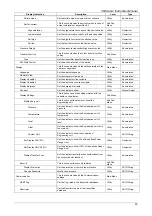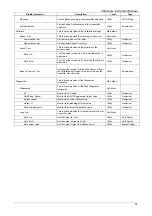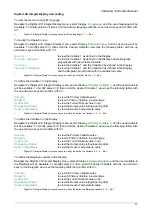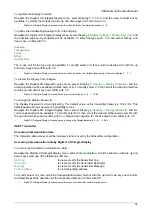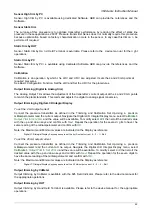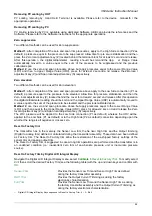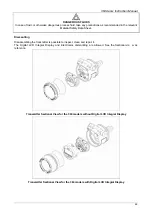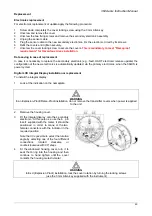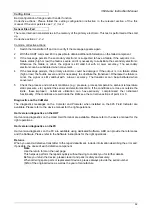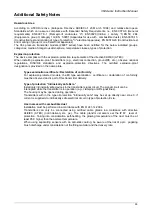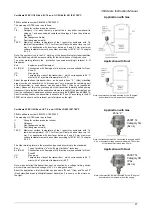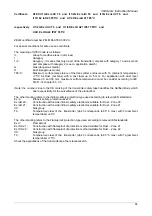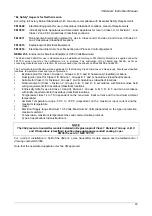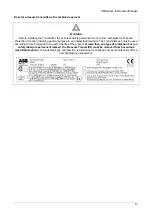
364Ax-Gx Instruction Manual
47
Replacement and Troubleshooting
WARNING !
Before you begin read “Safety” on page 3.
The display, secondary electronic, and transducer assemblies are not user-serviceable; however, they may
be replaced. This section describes the dismantle, the replacement and the troubl eshooting of these
assemblies. Other components are not replaceable except at the factory. As an example the housing covers
viewing glass. This because regulations do not p ermit field replacement of a broken or damaged glass as
this would invalidate the enclosure’s explosion proof rating. Therefore it is necessary to replace the entire
damaged enclosure cap assembly.
Dismantling and reassembly
Dismantling and reassembly should not be carried out on site because of the risk of damage to components
and printed circuits as a result of a dverse environmental conditions such as humidity, dust, et c. The
dismantling and reassembly procedures given belo w should be carried out in the listed orde r to avoid
instrument damage. See the pictures at the end of the instructions for better understanding.
Operation required tools
3 mm Allen key (in the transmitter box)
Small Phillips screwdriver
Small flat-bladed screwdriver
Safety information for Dismantling and Reassembly
Read the following Safety information before to start any operation.
WARNING !
Only specialist personnel or ABB may undertake dismantling and reassembly of certified devices.
Explosion-protected transmitters may only be repaired by the manufacturer or otherwise must be
approved by a certified expert after the repairs!
Observe the relevant safety precautions before, during and after the repairs.
WARNING !
Process fluids and/or pressure retained in the transmitter primary unit can cause severe injury and death or
damage to the equipment. It is the user responsibility to make sure that no pressure is applied before
removing the instrument from service or when draining or venting.
WARNING !
For Hazardous classified Location installations, at least seven (7) threads on the cover must be engaged in
order to meet the flameproof (explosion-proof) requirements.



